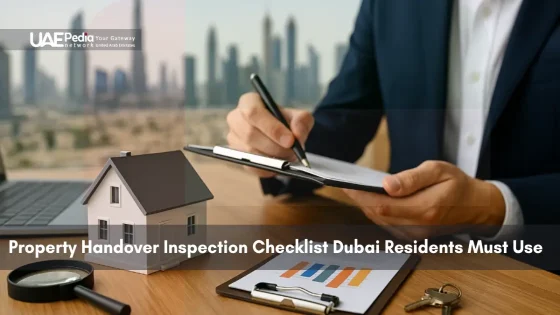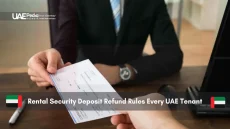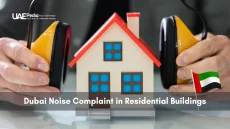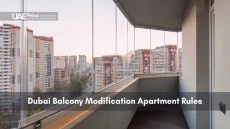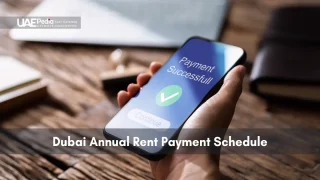What if the key to avoiding costly headaches in your new home isn’t luck—but a simple, systematic approach? Whether you’re settling into a sunlit downtown apartment or a villa near the dunes, every detail matters when finalizing your space. That’s where a structured evaluation becomes your best ally.
In a city where innovation meets tradition, overlooking minor flaws during a home transition can lead to major hassles later. From hidden plumbing quirks to paperwork nuances, this process demands more than a quick glance. Our detailed guide to Dubai’s property transition breaks down why meticulous attention here saves time, money, and stress.
We’ve crafted this resource to mirror the precision of Dubai’s skyline—clear, comprehensive, and culturally attuned. You’ll discover:
- How to spot structural concerns before they become emergencies
- Safety protocols tailored to regional building standards
- Smart documentation strategies that protect your investment
Think of this as your friendly roadmap through every corridor and contract. Let’s ensure your new space reflects the care you’ve taken to claim it.
Understanding the Dubai Property Handover Process
Ever wondered how those gleaming towers transition from construction sites to dream homes? The journey from keys to comfort involves careful coordination. Let’s walk through the essential phases that transform blueprints into lived-in spaces.
Milestones That Matter
Developers kick things off with a completion notice via the Dubai Land Department (DLD). You’ll then have 30 days to:
- Schedule a walkthrough with the building team
- Verify utilities like DEWA connections
- Review the snag list for any fixes needed
| Phase | Timeline | Responsible Party |
|---|---|---|
| Initial Notification | Day 1-5 | Developer |
| Inspection Window | Day 6-25 | Buyer + Inspector |
| Final Transfer | Day 26-30 | DLD |
Rules of the Road
Local regulations require developers to provide specific documentation during transfer. Always check for:
- Oqood registration confirmation
- No-objection certificates
- Up-to-date service charge breakdowns
One insider tip? Budget for unexpected costs. While DEWA activation averages AED 2,000, title deed fees can vary based on valuation. Keep this table handy:
| Fee Type | Average Cost (AED) | Payment Timing |
|---|---|---|
| DEWA Activation | 2,000-3,500 | Pre-handover |
| Oqood Registration | 4,000+ | During Purchase |
| Title Deed Transfer | 2% of value | Final Sign-off |
We’ve seen countless clients breeze through this phase by treating paperwork like treasure maps—every document reveals crucial details. Double-check every clause, and you’ll be sipping karak chai in your new balcony sooner than you think!
Preparing Your Property for a Detailed Inspection
Imagine stepping into your new space knowing every corner meets your expectations—no surprises, just peace of mind. A little prep work now saves hours of frustration later. Let’s turn this into your smoothest transition yet.
Blueprint Your Approach
Start by mapping out your priorities. One seasoned property management pro shares:
“Treat your walkthrough like a treasure hunt—you’re uncovering both gems and areas needing polish.”
Smart move? Split your review into outdoor and indoor zones. Check faucets, pipes, and drainage points early—water issues often hide in plain sight. Recent maintenance records? Those tell stories newer walls can’t.
| Checklist Category | Priority Items | Expert Tip |
|---|---|---|
| Utilities | Water pressure tests, meter readings | Film faucet runs for later reference |
| Safety | Smoke detectors, circuit breakers | Test during daylight for clarity |
| Surfaces | Tile gaps, paint consistency | Use phone flashlight for shadows |
Goals Before Gloves
Define what “done” looks like. Are you protecting your investment? Ensuring tenant comfort? Jot three non-negotiable targets—like verifying appliance warranties or spotting drainage quirks.
Snap photos of every observation. Tag them in a digital folder with dates and notes. When questions arise later (and they will), you’ll have a visual paper trail that speaks louder than memory.
Exterior and Interior Inspection Essentials
Ever peeled an orange only to find a bruise? That’s why we scrutinize both skin and pulp of buildings. Your future comfort depends on spotting what’s beneath the surface—before it becomes a sticky situation.
Beyond First Impressions
Start outside by tracing the building’s silhouette. Look for cracks in walls wider than a credit card—these signal structural shifts. Roof inspections demand sharp eyes: missing tiles or rusted gutters often hint at hidden water damage. One contractor shared: “Landscaping isn’t just about beauty—sloped soil should divert rainfall away from foundations.”
| Area | Common Issues | Expert Tip |
|---|---|---|
| Roof | Loose tiles, pooling water | Check after rain for drainage clues |
| Driveway | Cracks, uneven surfaces | Roll a marble to test slopes |
| Walls | Discoloration, fissures | Morning light reveals shadows |
Indoor Investigations
Inside, floors tell tales. Uneven tiles? They might hide subfloor moisture. Test every faucet—low water pressure could mean pipe buildup. Newer homes often have cosmetic flaws like paint drips, while older gems may need wiring upgrades. When in doubt, snap photos and consult a specialist. As one real estate veteran notes:
“What you dismiss today becomes tomorrow’s emergency fund drain.”
Remember: minor fixes now prevent major headaches later. That faint musty smell? Could be mold plotting its next move. Stay curious, stay thorough—your future self will thank you.
Safety Standards and Amenities Evaluation
Safety isn’t just a checklist item—it’s the foundation of every happy home. Let’s start where safety meets action: smoke detectors that chirp readiness and fire exits that promise peace of mind.
Verifying Safety Equipment and Systems
Test every alarm like it’s midnight on New Year’s Eve. Press test buttons on smoke detectors and watch for green indicator lights. One security expert advises: “Security systems should hum with purpose—any erratic beeping warrants immediate attention.”
| Safety Feature | Check Method | Red Flags |
|---|---|---|
| Fire Alarms | Test button + decibel check | Delayed response >3 seconds |
| Emergency Lighting | Power outage simulation | Flickering or dim beams |
| Security Cameras | Pan-tilt-zoom test | Blind spots in corridors |
Assessing Common Areas and Amenities
Communal spaces reveal how a building ages. Inspect gym equipment bolts for rust and pool filtration systems for odd noises. Review maintenance logs for elevator repairs—frequent fixes hint at deeper issues.
- Compare amenity fee breakdowns against actual offerings
- Scan title documents for shared space responsibilities
- Time walk from unit to emergency exits
Ownership isn’t just about walls—it’s about ensuring every shared staircase and rooftop lounge meets your standards. As one resident shared:
“That sparkling lobby? It’s the first thing tenants praise—or protest.”
Make sure today’s thorough checks become tomorrow’s carefree mornings. Because when safety systems hum and amenities shine, your space transforms from a structure into a sanctuary.
Managing Documentation and Fee Verifications
What if your most powerful tool isn’t a flashlight or tape measure—but a well-organized folder? Managing documents and charges feels less daunting when you approach it like a treasure hunt. Let’s turn those stacks of paper into confidence boosters.
Decoding Legal Essentials
Start with the title deed—your golden ticket. Verify names, plot numbers, and boundaries against official maps. One legal advisor shares: “Always cross-reference signatures and stamps with the DLD portal—digital verification takes three minutes but saves three months of headaches.”
- Request original copies of Oqood certificates
- Confirm service charge calculations match your contract
- Check for encumbrance certificates—clean titles mean smoother transitions
Fee Forensics 101
Scrutinize every line item. DEWA deposits often hide in plain sight, while HVAC maintenance fees might surprise new owners. Here’s a quick cheat sheet:
| Charge Type | Typical Range (AED) | Watch For |
|---|---|---|
| Utility Deposits | 2,000-4,500 | Refund policies |
| HVAC Testing | 500-1,200 | Included warranties |
| Community Fees | Varies by area | Retroactive charges |
Pro tip? Test air conditioning units during peak afternoon heat. A system that stutters at 2 PM needs attention before summer hits. Keep a dedicated folder for:
- Signed inspection reports
- Payment receipts with timestamps
- Email threads requesting clarifications
Remember—paperwork patience pays. As one recent buyer noted: “Slowing down to ask ‘Why is this fee here?’ saved me AED 8,000 in disputed charges.” Your future self will thank you for every question asked today.
Implementing the property handover inspection checklist dubai
Ready to turn your walkthrough into a victory lap? Think of your checklist as a treasure map—every tick mark brings you closer to claiming your space with confidence. Let’s transform those bullet points into action.
Your Field Guide to Flaw-Finding
Start with a clockwise room tour. Test every switch and faucet—yes, even that guest bathroom you’ll rarely use. One seasoned evaluator advises: “Listen for the story behind silent drains and creaky cabinets—they’re whispering clues.”
- Arm yourself with blue painter’s tape to mark imperfections
- Capture video of appliances in action—especially HVAC systems
- Compare meter readings against utility provider records
| Issue Type | New Builds | Older Units | Action Needed |
|---|---|---|---|
| Surface Flaws | Paint drips, uneven grout | Faded finishes, cracked tiles | Photo documentation + repair request |
| System Glitches | Smart home calibration | Wiring upgrades | Specialist evaluation |
| Water Concerns | Pipe pressure tests | Drainage audits | Immediate developer notification |
From Snags to Solutions
Found a loose balcony railing or flickering light circuit? Document it like a news reporter—who, what, where, when. Email developers within 24 hours using their preferred template. Pro tip: Attach timestamped videos showing issues in action.
“Paper trails protect investments—I’ve seen a single dated photo settle AED 15,000 repair disputes.”
When reviewing repair commitments, cross-reference warranty periods and service level agreements. Complex electrical or structural concerns? That’s your cue to bring in certified pros. Remember: Your title deed isn’t fully yours until every item gets resolved.
Engaging Professionals for a Complete Handover
Imagine having a seasoned detective uncover hidden flaws in your new home—that’s what a professional inspector brings to your corner. While personal checks are valuable, experts spot what untrained eyes miss. They blend local know-how with tech tools to protect your stake in the space.
Why Expertise Wins
Certified evaluators use thermal cameras to detect HVAC leaks and moisture meters to find hidden water damage. One inspector shared: “We’ve found faulty wiring behind pristine walls that could’ve sparked fires—issues owners rarely catch alone.” Their detailed reports become your negotiation superpower.
| DIY Check | Pro Inspection | Impact |
|---|---|---|
| Surface scratches | Structural integrity | Safety risks vs. cosmetic fixes |
| Appliance tests | Warranty validation | Future repair costs |
| Light switches | Electrical load analysis | Preventing system overloads |
Paper Trails That Pay Off
Always request a stamped defects list—this legally binds developers to fixes. Follow up within 48 hours via email with photo evidence. Smart move? Pair your inspector’s report with title deed cross-checks at the DLD portal. It confirms no ownership disputes lurk in the shadows.
When choosing evaluators:
- Verify their RERA certification number
- Ask for sample reports—look for thermal imaging
- Confirm they test drainage slopes with laser levels
“A thorough pro check takes 3-4 hours but saves months of back-and-forth. It’s your shield against surprise charges.”
Balance your walkthrough notes with their expertise. You’ll sleep easier knowing every pipe, wire, and bolt earned its place in your new haven.
Final Steps for a Seamless Property Transition
You’ve navigated every corridor and contract—now it’s time to cross the finish line with confidence. Picture this moment as your ceremonial ribbon-cutting: every detail polished, every i dotted.
Start with a victory lap through your space. Test faucets one last time (yes, even that guest bathroom). Confirm all safety systems hum with purpose. One pro tip? Bring a trusted friend—fresh eyes catch what familiarity might miss.
Paperwork is your silent partner here. Triple-check service fees against contracts and verify your title deed matches DLD records. At the Customer Happiness Centre, ask about water pressure test results and HVAC warranties. These final touches transform houses into homes.
- Request stamped confirmation for completed repairs
- Organize digital folders with photos and payment receipts
- Schedule seasonal maintenance within warranty periods
Protecting your investment means thinking beyond move-in day. Keep communication lines open with developers—polite persistence pays dividends. As one recent tenant shared: “Those extra minutes spent verifying details saved me months of back-and-forth.”
Ready to make it official? Grab your free step-by-step guide and stride into this new chapter knowing every base is covered. Here’s to spaces that spark joy—and ownership that feels effortless.
Dubai’s real estate market has strict regulations and high standards. A thorough checklist ensures you verify everything from structural integrity to utility connections, avoiding costly oversights. It’s your defense against hidden issues that could delay ownership transfers or rental agreements.
Always review the title deed, No Objection Certificate (NOC) from the developer, and Dubai Land Department (DLD) approvals. Confirm service charges are settled and ensure the Ejari (rental contract) or sale agreement aligns with the property’s actual condition.
Look for cracks, uneven surfaces, or water stains—common red flags in Dubai’s climate. Test faucets, inspect tile grouting, and check for moisture under sinks. Use a flashlight to reveal imperfections that daylight might mask. Don’t skip testing balcony drainage—sandstorms can clog systems fast!
Absolutely. Dubai’s heat makes HVAC efficiency non-negotiable. Verify cooling performance across rooms and check filter cleanliness. For safety, test smoke detectors, fire extinguisher expiry dates, and emergency exit signage—especially in high-rises where regulations are stringent.
Beyond the purchase price, budget for DLD transfer fees (4% of property value), Dewa (utilities) deposits, and community maintenance charges. Some developments add “snagging fees” for minor repairs—negotiate these upfront to avoid last-minute surprises.
While possible for small units, experts from firms like Gulf Check or PRO Engineer spot issues untrained eyes miss. They’ll document problems with thermal cameras and moisture meters, giving you leverage in repair negotiations with developers.
With no major snags, expect 7-14 days for final approvals. Delays often come from developer responsiveness or DLD processing. Keep all communication written—WhatsApp updates won’t hold up if disputes arise. Pro tip: Schedule inspections early in the week to avoid weekend slowdowns.
